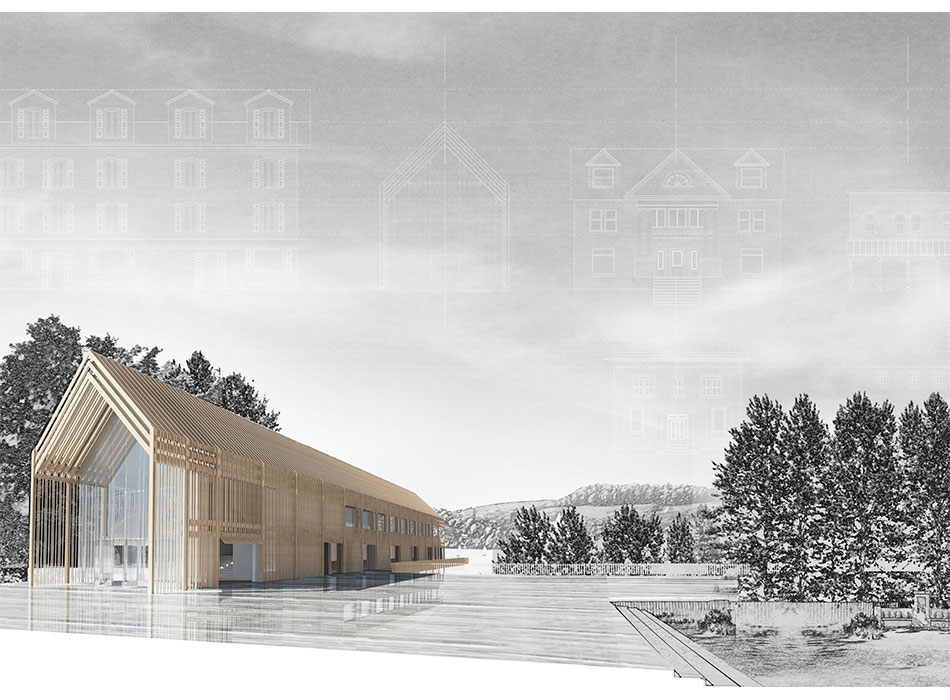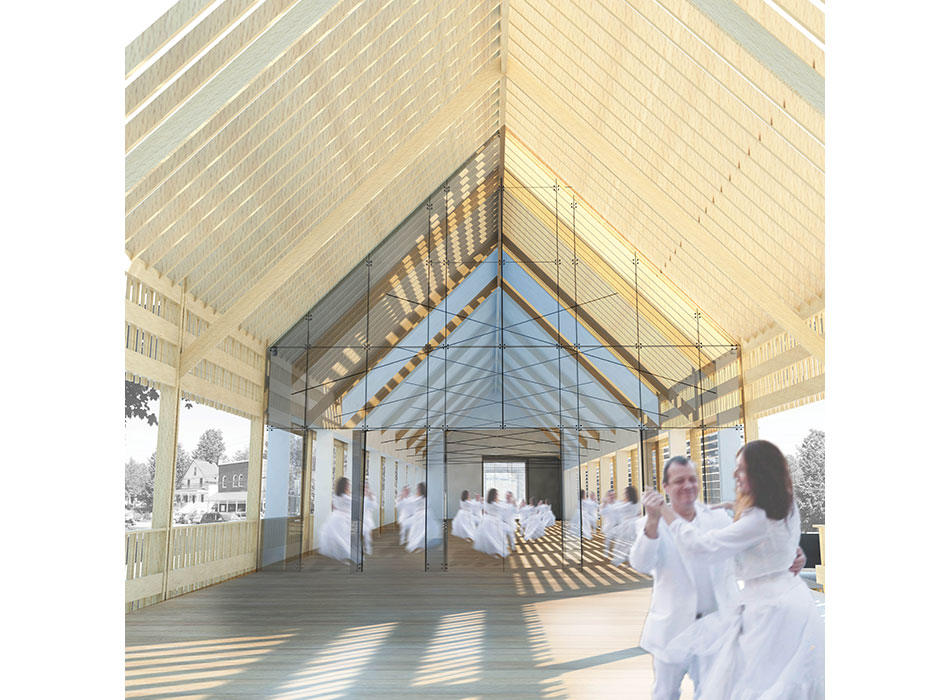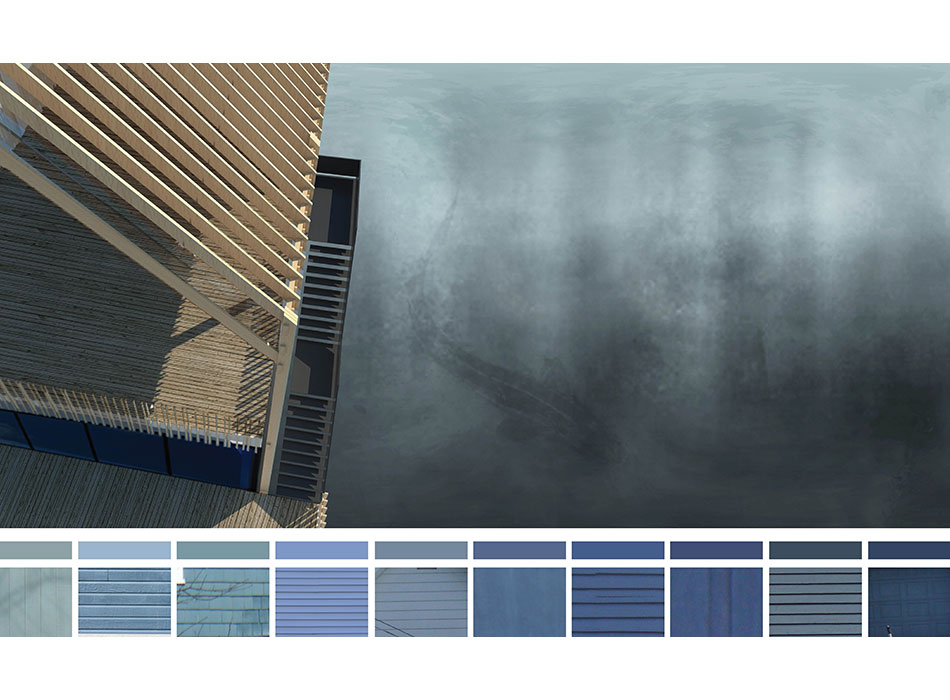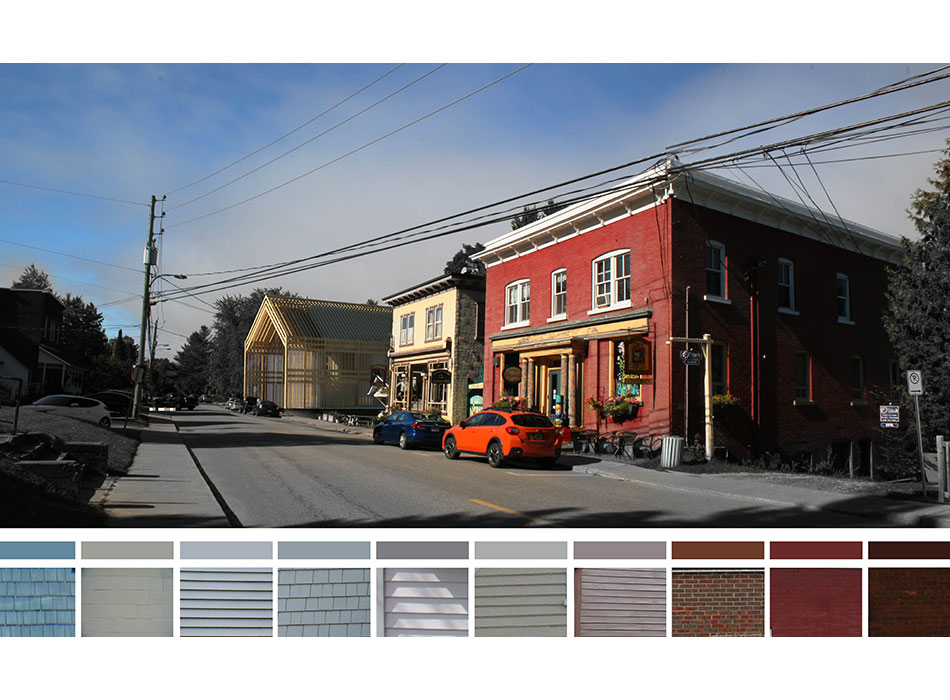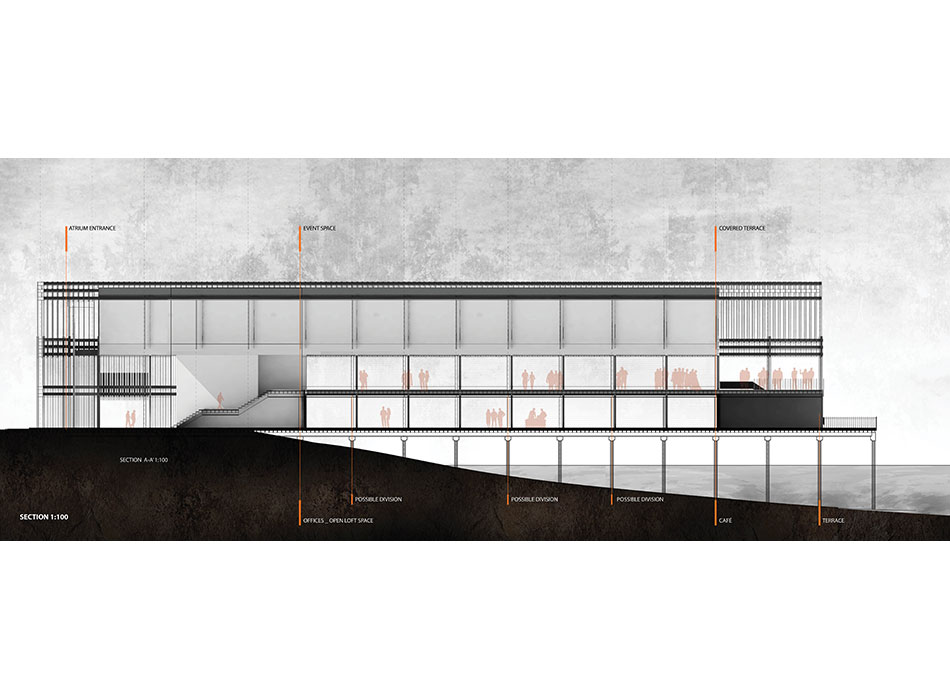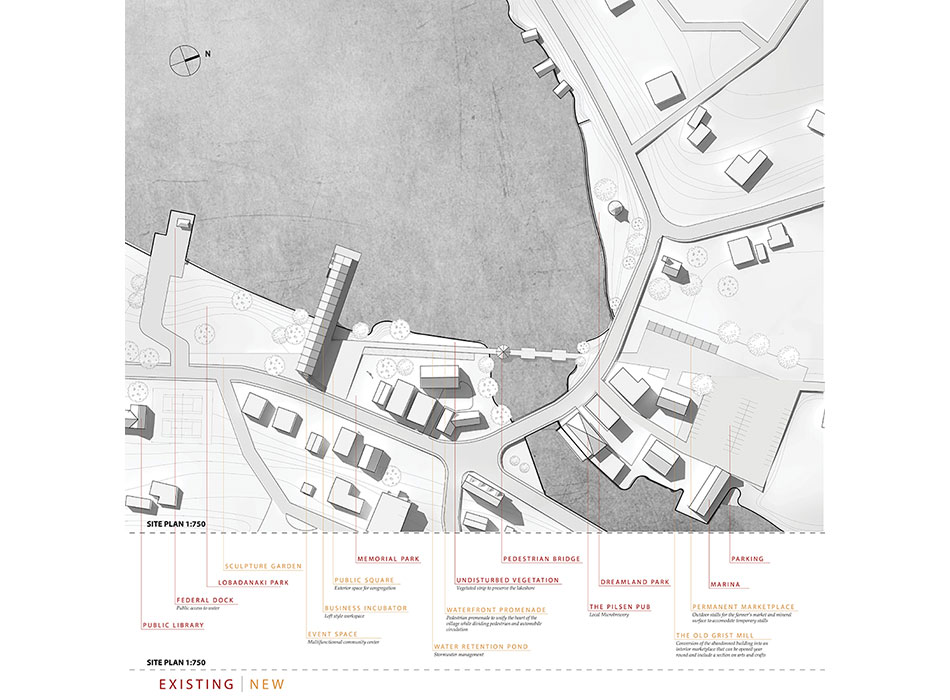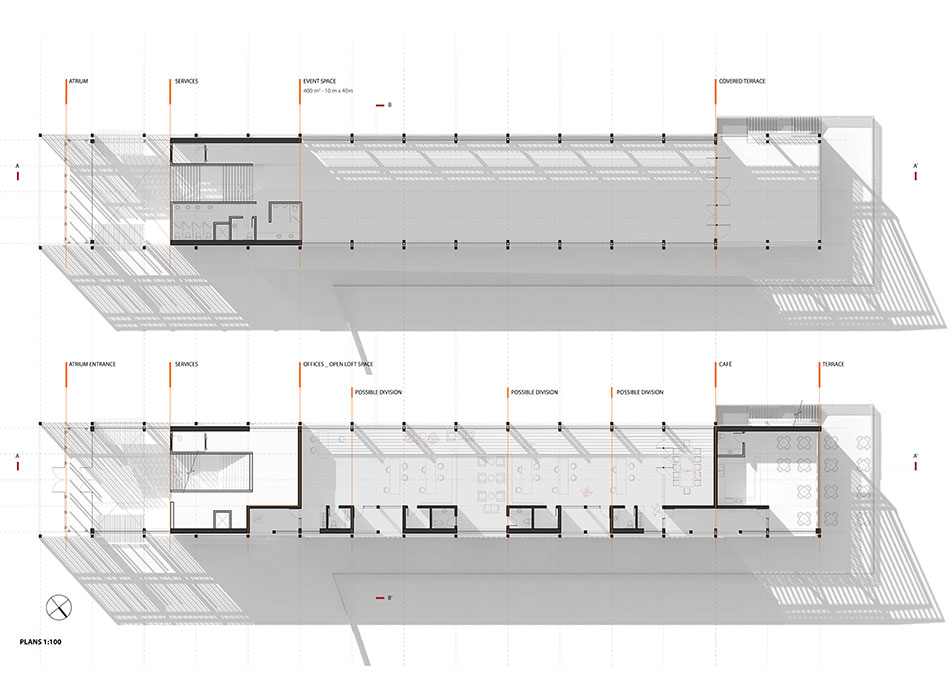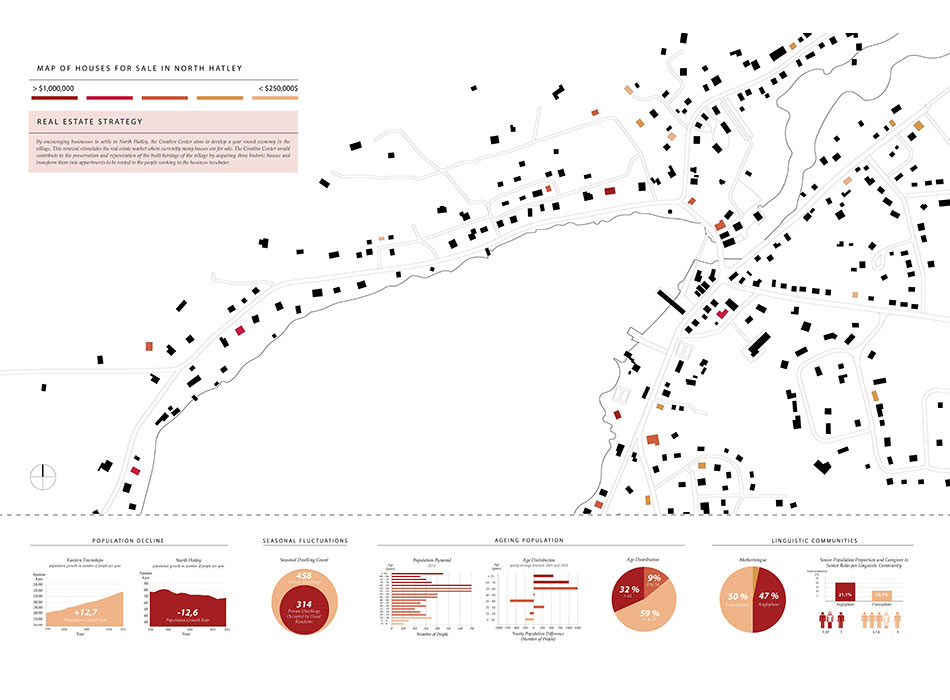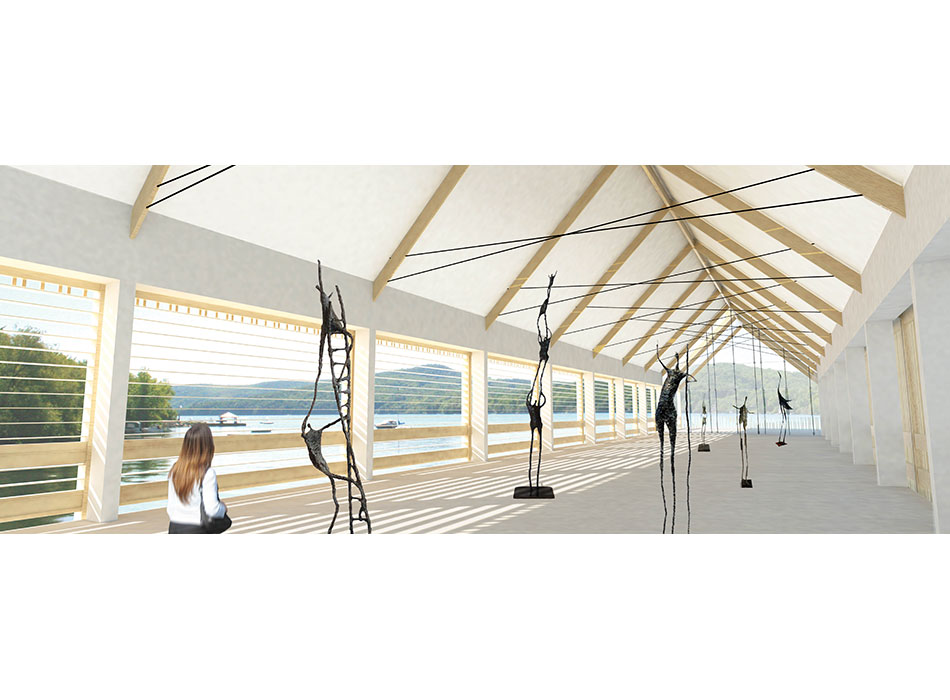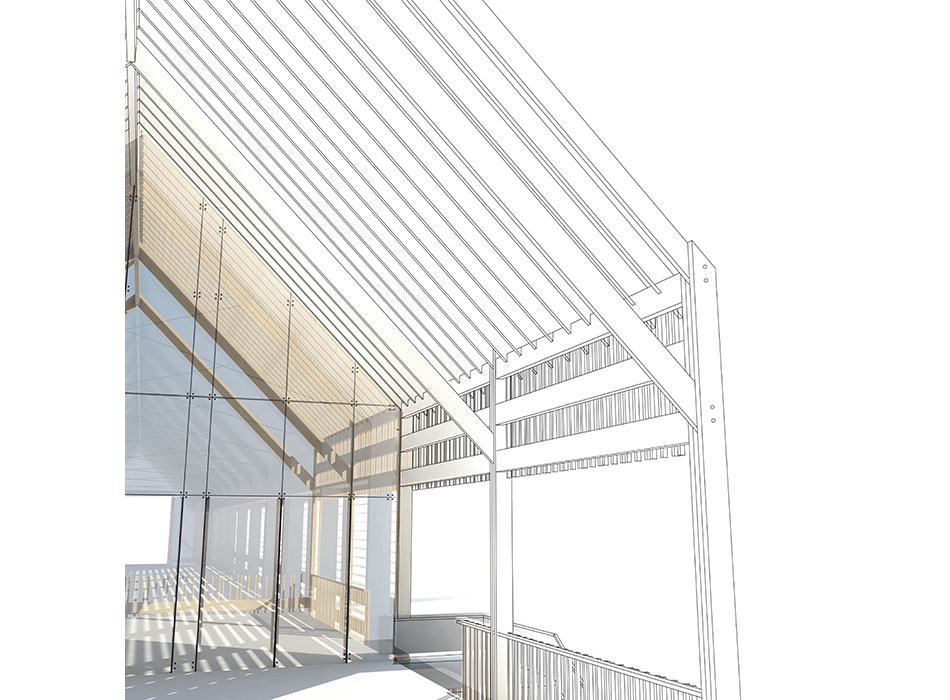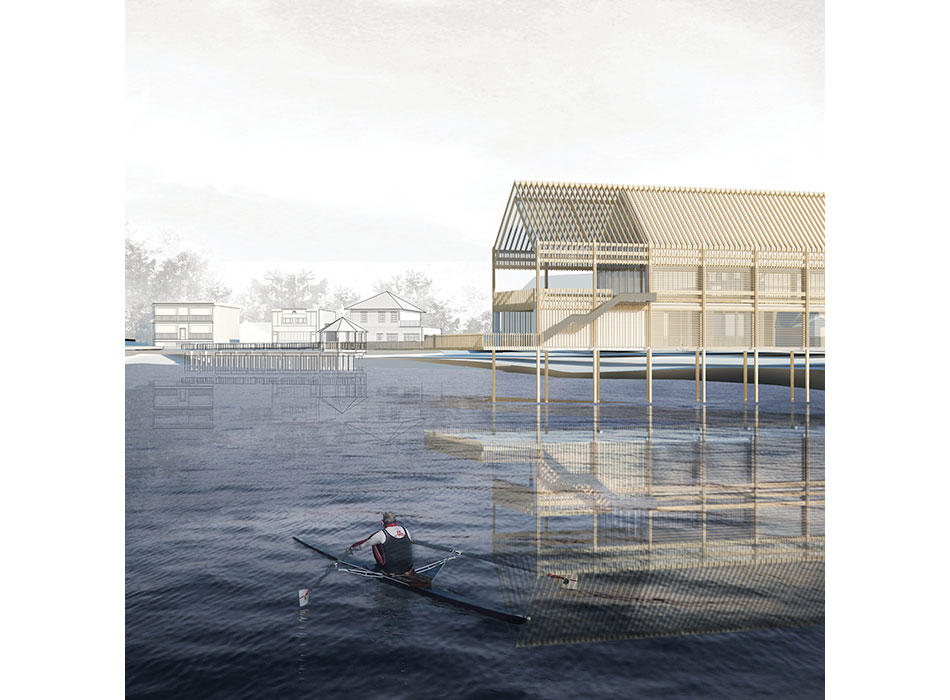Mylène Moliner-Roy
Architecture Thesis | Advisor: Howard Davies
This research explores the cultural value of architecture and engages in a current debate on the future of North Hatley, a small village of the Eastern Townships of Québec.
The first part of my thesis studies the history of North Hatley and questions how architecture communicates knowledge, values and ideologies over time. The village was built primarily in the late 19th and early 20th century by wealthy progressive Americans who accessed pristine Canadian countryside in order to escape the rise of industrialization and consumerist culture in their homeland. The homes they built were intended to balance tradition with modernity. These summer homes, enabled them to adopt a comfortable yet rustic lifestyle while on vacation. In North Hatley, the Colonial Revival style was chosen by these American migrants to convey progressive ideas such as the importance of a sense of place, nationalism, simplicity, durability and robustness. It appears that Colonial Revival style failed to reconcile traditional American aesthetics and modern values. This can be seen in the present day community by the fact that colonial forms endured more affirmatively than any subjacent ‘modern’ ideas. Indeed, the image of North Hatley was transformed in a retrograde way, moving away from an avant-garde community to a nostalgic countryside ideal. Today, the Colonial Revival aesthetic has proven to be deceiving. Instead of sustaining a sense of identity and traditional values, the Colonial Revival architectural style has led to the transformation of the village into a conventional postcard ‘authentic’ touristic experience.
The second part of my thesis revisits some progressive ideals and proposes to develop North Hatley into a creative center. An architectural plan will propose that the addition of a modern creative arts center can contribute to diversify the economic activities of North Hatley. The proposition suggests that the creation of a workplace where craftsmanship and creativity can flourish may be advantageous to reposition North Hatley as an economic and touristic attraction. Such a center could serve as an environment to raise awareness about the value of goods and engage in the debate on consumerism that is still relevant at the beginning of the 21st century. Within the proposed plan, the former railroad axis becomes stage for a creative core that unifies the center of the village in order to sustain the touristic interest. Along this axis, I propose the design for a signature building merging a community hall and a business incubator to encourage the development of a permanent economy in the village. The building stretches from the main street to the lakefront. Its style reinterprets the local architectural culture beyond the Colonial Revival stylistics to explore the symbolic value of form and architectural language. Altogether the proposal mediates between the rich heritage of the village, its current condition, and its future.
